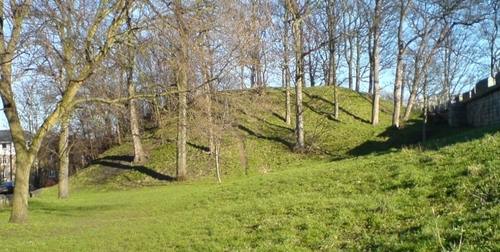1069–1200: Norman York
1066 and all that: Invaders from Normandy

Following the Norman conquest of England in 1066, William the Conquerer's armies marched north, arriving in York in 1069.
York became a centre of resistance against the invaders. Thousands of people were killed in the surrounding villages in the genocide of “The Harrying of the North” as the Normans asserted their power.
To secure his position in York, William built castles in York, on opposite sides of the River Ouse. These consisted of a motte (mound) and a bailey (surrounding fortification).
One castle was located where Clifford’s Tower now stands. (It was burned down in 1190, and initially rebuilt in wood.) The other castle now remains only as Bailie Hill next along the walls walk across the river:

Norman dominance in York was strengthened by support of the
Church. William permitted the location of a large abbey on lands where Museum Gardens are now. St Mary's Abbey played an important part in the economic life of the area until its destruction in the Dissolution of the Monasteries in the reign of Henry VIII.